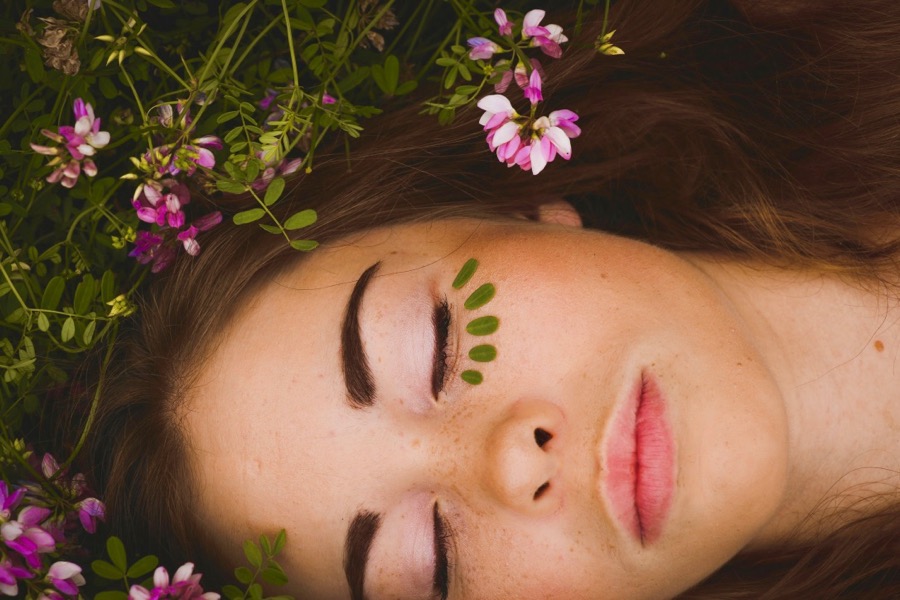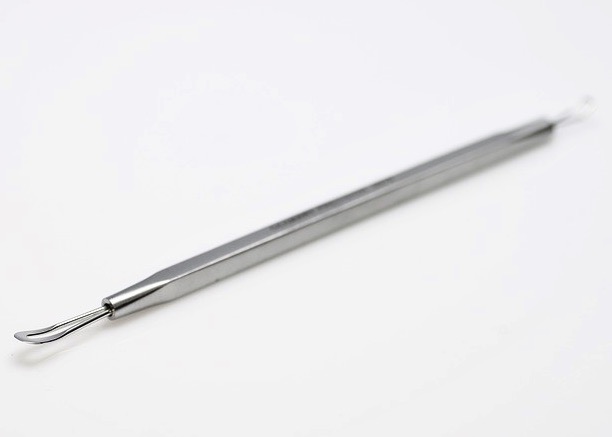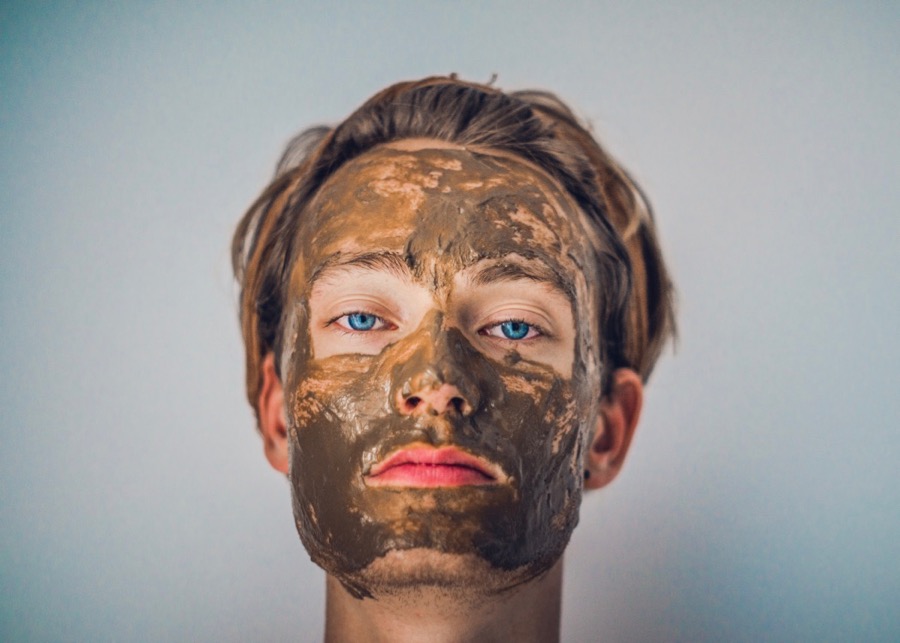Acne is an inherited condition of over-producing dead skin cells resulting in clogged pores. Part 1 of this series breaks down how acne forms and what makes it worse. In part 2, we unpack approaches to treatment.
Effective Acne Treatments
Acne treatments vary depending on skin type, type of acne (inflamed, non-inflamed), the grade of acne (1-4), and the presence of other conditions. Yet, all types respond to the use of topical products that penetrate down into the pore and clean it out, as well as prevent further dead skin cell build-up.
Alpha & Beta Hydroxy Acids
Hydroxy acids strip dead skin cells from the surface by dissolving the matrix which holds them together.
Home Care: Found in cleansers, scrubs, leave-on serums, and night treatments.
Professional Care: During the first couple of months of acne treatment, a series of 4-6 bi-weekly peels will clear existing acne lesions and keeps pores from clogging.
Alpha Hydroxy acids (L-Mandelic, Glycolic, Lactic) are water-soluble. Mandelic acid (derived from almonds) in particular is excellent for acne, not only for exfoliation and pore cleansing but also for its anti-bacterial and anti-inflammatory properties. It also lightens acne scarring by inhibiting melanin production. Look for “L Mandelic” which is *chirally correct (increasing absorption with less irritation) rather than the cheaper DL Mandelic.
*Chirally Correct: Molecules have two identical sides – a chiral version and a racemic version. The chiral side of the molecule communicates with the cell receptor and gives increased skin absorption. The racemic side can cause irritation and block the benefits of the chiral side. When the less effective aspect of the molecule is removed leaving the more effective side, it’s known as chirally correct.
Beta Hydroxy acid (Salicylic) is an oil soluble. Salicylic’s lipophilic abilities make it a powerhouse at penetrating clogged pores and dissolving the oily plug. Salicylic’s natural calming properties also make it a great option for acne rosacea.
Vitamine A
Tretinoin (Retin-A, Atralin, Renova, Refissa, Avita, Tretin-X) is a derivative of vitamin A, Retinoic Acid, which increases cell turnover. Tretinoin doesn’t address the bacterial action in a pore, but it’s very effective at unblocking and peeling down inside the pore. Initially, it may cause the condition to appear worse as the skin purges, but with continued use the rapid cell turnover forces impaction up and out, and doesn’t allow new ones to form. Tretinoin (Retin-A) comes in 3 strengths: 0.5 for sensitive skin, 1.0 for thick aged, 1.5 for thick, and oily skin. Apply a pea-size at night on dry skin after cleansing. Wash off in the morning as usual. You must wear sunscreen during daylight hours when treated with retinoid acid.
Your dermatologist can help choose the best product and protocol for your type of acne. I discourage using the following brands for the reasons described:
Renova is an emollient retinoic acid cream created for dry, aged, and sun-damaged skin. Its purpose is to stimulate the production of collagen and elastin while hydrating the skin. Although it contains retinoic acid, the ingredients in Renova are not appropriate for acne skin types as they will likely clog pores.
Tazorac is the first retinoid formulated specifically for psoriasis. Dermatologists have now begun to prescribe Tazorac for acne as well. The cream form is often used for Psoriasis and the gel form for Acne, but it appears to be quite a bit more costly than other retinoid treatments.
Adapalene (brand name Differin) is an over-the-counter retinoic acid gel, approved for acne by the FDA. The reason I don’t recommend Differin is that I’ve read some disconcerting information about paraben preservatives which states they may mimic estrogen by binding to estrogen receptors on cells. If this is true it would disrupt hormone function, an effect linked to an increased risk of breast cancer and reproductive toxicity. This is disputed, yet I like to play safe.
Benzoyl Peroxide
‘BPO’ is a highly effective treatment for acne. It loosens impactions and causes the skin to dry and peel. As well, it pulls peroxide into the pore, killing the anaerobic p. acnes bacteria. Benzoyl Peroxide can be found in cleansers, scrubs, leave-on serums, shaving creams, and night treatments. But it’s important to find a quality product. As we learned in part 1 of this series, a poorly formulated BPO product may contain isopropyl myristate (pore-clogging) and/or oil. Oils not only clog pores but also inhibit the penetration of benzoyl peroxide, canceling out the benefit! Laureth-4 is a common oil used in many poorly formulated acne treatments.
Application: Dot around the face, then quickly rub in for all-over evenness. If skin becomes overly dry, try using it every other night and cycle an oil-free hydrating serum on the off nights. BPO can also be used as a spot treatment for random blemishes.
Downside: BPO oxidizes the skin (aging it), which is why I normally don’t use it for people over 35.
Supplemental Aids
Topical Sulfur
Sulfur is drying for oily skin types. It also increases the stability and boosts the peeling action of BPO. Look for sulfur in masques and serums, preferably combined with benzoyl peroxide.
Cryotherapy
Freezing (with liquid nitrogen or dry ice with acetone) does work but is impractical for regular use. However, simply rubbing ice over the face twice a day will calm and reduce inflamed acne.
Oral Supplementation
Zinc supplementation helps reduce inflammation. It also dries skin and supports connective tissue. Take 100mg. per day with food (to avoid nausea) can calm inflamed (red and swollen) acne lesions.
Fish Oils Omega 3 oils are anti-inflammatory and may help regulate hormones. Research suggests that chronic inflammatory acne may benefit from high doses (1000-1700mg.) of omega-3 oils from wild ocean fish such as salmon, mackerel, cod, and herring. Make sure it’s “molecularly distilled” to be free of heavy metals.
Vitamin C is antioxidant and antiseptic which builds the immune system.
Vitamin B complex (Panthenol) is an antioxidant that protects the nervous system from stress.
Vitamin E When taken internally (not topically) makes sebum soft and fluid so that it won’t form a plug and block the pore opening.
Treatments with Drawbacks
Acne prescriptions usually aim at killing bacteria and/or drying oil. This can help, yet it doesn’t address the root problem of overproducing dead skin cells. Since prescription medications almost always come with a level of toxicity, I prefer a less invasive approach. In my experience, acne grades 1-3 can get clear without prescription medications. However, Grade 4 acne should definitely see a dermatologist to check for other conditions or diseases. Some skin conditions masquerade as acne, like fungal folliculitis, staph infection, and steatocystoma multiplex.
If you’re going to use prescriptive treatments for acne, you should be fully informed of the health risks. Here’s a list of medications dermatologists commonly prescribe for acne:
Oral Antibiotic
Antibiotics filter through the body, eventually reaching the skin and killing off bacteria (both good and bad). They calm the inflammatory response by reducing the irritating chemicals produced by white blood cells, but they only reach the skin to a small degree and cause damage to the entire body in the process.
Antibiotics suppress good probiotics, suppress the immune system, increase viral infections, increase the risk of breast cancer, and cause kidney damage. Bacteria also become resistant to antibiotics, which has major health ramifications not only for the person but for the planet. Antibiotic use can lead to deadly MRSA and C-Difficile.
The most commonly prescribed antibiotics for acne include:
Tetracycline – Binds to protein in the stratum corneum and suppresses p.acnes bacteria. The dosage is 500 mg. 2x day, decreasing with improvement.
Minocycline – A tetracycline derivative, used for pustular-type acne. The dosage is 50-100 mg 2x a day. Side effects include dizziness nausea and vomiting. With long-term use, skin pigmentation changes and tooth discoloration can occur.
Erythromycin – has anti-inflammatory properties, but can cause stomach upsets and nausea. The dosage is 250-500 mg. 2x a day.
Doxycycline – Used for people who don’t respond to, or can’t tolerate tetracycline or erythromycin. The dosage is 50-100mg. 2X day (with food to avoid nausea). It increases sensitivity to the sun.
Clindamycin – Oral or topical (but usually topical). The oral dosage is 75-150mg. 2X day. Major “side effect”: This can cause an intestinal infection called pseudomembranous colitis caused by the bacteria, clostridium difficile (which can kill you).
Spironolactone – Originally formulated to treat a medical condition of over-producing androgens. Spironolactone is a potent antagonist of the androgen receptor and androgen production. In other words: It cuts down oil production. It’s also used to lower high blood pressure, and now it’s used off-label at low doses to treat acne, though it’s not officially approved for acne use. Spironolactone can cause birth defects.
Topical Antibiotic
Unfortunately, many topical antibiotic creams contain comedogenic ingredients.
Clindamycin has an FDA warning stating that its use “May result in death.” …Um… Excuse me?!
Isotretinoin (Accutane)
In 2009 Roche, the manufacturer of trademarked Accutane, pulled the drug off US markets after former Accutane users were awarded millions of dollars in compensation for illness related to its use, including Crohn’s disease, liver damage, birth defects, and having to wear colostomy bags for the rest of their lives. Although the brand name Accutane is off the market, other brands of the same drug (Isotretinoin) continue to be prescribed by doctors!
Taken orally, Isotretinoin shrinks oil glands, dries the skin, and creates massive exfoliation. Unfortunately, it drys all other glands as well (permanently), and has serious side effects including severe dryness (eyes, nose bleeds, lips crack, extreme thirst), irritable bowel syndrome, Crohn’s disease, central nervous system injuries, skeletal damage, liver damage, cardiovascular injuries, muscle loss, ulcerative colitis, pancreatitis, immune disorders, hair loss, suicide, and birth defects if one becomes pregnant while on the drug.
Estrogen Based Birth Control Pills
The synthetic estrogen in female-dominant (estrogen) birth control pills leads the pituitary to shut down all the hormones normally produced by the ovaries, including testosterone. This can cut a woman’s sebum production by 50% and will help to clear acne. However, the risks include cardiovascular problems, blood clots, and migraine headaches.
Oral Vitamin A
Vitamin A taken internally can build up in the liver becoming toxic at high levels. In order to have any effect on acne, internal vitamin A would need to be taken at toxic levels of 100,000 – 1,000,000 units. Stick with topical retinoids!
Treating Acne Scarring
Dermabrasion
Sanding down below the level of the scaring, to let normal (un-scared) skin grow is an effective treatment for acne scarring known as Dermabrasion. You’ll need 2 weeks of downtime for healing.
Downside: Pigmentation or lightning in the area can occur, which is why it is best to do the whole face, if at all.
Chemical Peels
Phenol or trichloroacetic acid peels must be done by a dermatologist due to the depth of the peel. One to two weeks’ downtime.
Downside: Though rare, some people do have a sensitivity to TCA peels. An over-abundance of TCA quickly entering the bloodstream can cause heart problems & kidney damage.
Collagen Injections
Liquid collagen (the connective tissue of the dermis) can be injected into sunken acne scarring. It may take several injections to fill the pit.
Downside: If the scar is ridged, the injection can sit on top and accentuate the shape of the scar.
Laser Abrasion
Lasers can be used to vaporize the top layer of dead skin cells which smooths out fine lines and superficial scarring. Laser followed by dermabrasion can be quite effective.
How can an esthetician help?
Esthetic schools in the USA teach histology, safety, disease prevention, and passing the State board exam. To understand skincare in-depth, estheticians need to pursue advanced training and self-study beyond their initial training. If you find such an esthetician, they can absolutely help turn your condition around, and often with a gentler approach than a dermatologist.
Professional-Grade Products
The real benefit of consulting a skincare professional lies in quality professional-grade products backed by the knowledge of how to properly use them. Your esthetician can also design a home-care regimen of cosmeceuticals customized for your skin.
Cosmeceuticals are more expensive, but they are far more effective and you save money in the long run! Drug store products are usually marketing hype aimed at selling a product without solid science behind their formulation. They have minimal active ingredients (and the cheapest available) to make the most profit margin.
Hydroxy Acid Facial Peels
Alpha and Beta hydroxy acid peels exfoliate the surface of dead skin cells and soften comedones (plugged pores). They can also assist in lightening dark spots of pigmentation from acne scarring.
What’s more, removing the surface layer of dead skin cells maximizes the absorption of home care products. Professional grade peels are an essential element in acne treatment and should be done in a series every other week for 6 weeks along with extractions and home care.
Extractions
An extraction tool (in some States Estheticians may also use a lancet) is used to remove the plug at the hair follicle opening. Once that plug is removed, the pore can clean out and heal. If done regularly, you can avoid a plugged pore from ever becoming infected or inflamed.
Once the pore becomes infected or inflamed, there’s not much to be done. You can ice the area to calm inflammation, and dry them out with sulfur, benzoyl peroxide, or tea tree oil, but you just need to wait for them to heal. Don’t pick or try to squeeze them! The trick is to extract before they get to that point and stop pores from plugging up with dead cells in the first place.
It takes up to 90 days for acne to form and come to the surface, so even if you commit to a program with regular peels, extractions, and quality home care, you’ll still have some breakouts as old underlying impactions come to the surface. They were already formed and need continued extractions every two weeks for the first 6-8 weeks.
LED Treatments
Some estheticians have LED (light-emitting diodes) lamps. Blue LED releases oxygen within the follicle to kill p.acnes bacteria. Red LED is healing and builds collagen and elastin to help heal acne scarring.
Microdermabrasion
After acne clears, some people are left with discolored scarring called “Post Inflammatory Hyper Pigmentation” or PIH. Microdermabrasion can reduce PIH by abrading off the top layer of discolored dead skin cells.
However, performing microdermabrasion too early could bring back the chemical messengers (cytokines) which stimulate melanin production (the dark coloring). So wait at least one month after acne has cleared to be sure that cytokines have ‘left the building.’
Personalized Home Care Regimen
Skin adapts to products and stops responding, which is one very good reason to work with an acne specialist who can walk you through the process of gradually increasing treatment until clear because there’s a fine line between pushing the skin and irritating it.
After achieving total clearing, you’ll need to keep up the product regimen for another 2-3 months, and then start backing down to a maintenance level. You’ll probably continue with the maintenance level for a number of years until you reach your “acne burn-out age.”
With variations in skin type, climate, environment, sensitivity, age, and grade of acne, it’s not possible to provide a one-size-sits-all acne protocol. An acne specialist will provide a personalized home care regimen for you.
Skin Consults
I offer skincare consultations via Zoom/Skype at $1 per minute paid through PayPal/Venmo. Usually, only 15-20 min. needed.
Home Care Regimen
The key elements of acne home care:
Cleanse
Foaming gel (no cream) cleansers, preferably with some active ingredients such as hydroxy acids to strip dead skin cells, or Benzoyl Peroxide to kill bacteria.
Exfoliation
Salicylic acid, L-Madelic acid, Glycolic acid, Benzoyl Peroxide, Retinoids: in cleansers, scrubs, masks, serums, or night treatments.
Antibacterial Agents
Benzoyl Peroxide, L-Mandelic acid & Salicylic acid
Keratolytic Treatments (shed outer layers of dead skin cells)
Benzoyl Peroxide and/or Retinols to increase skin metabolism.
Absorb Excess Oil
For those with oily skin, find a toner containing Beta hydroxy (Salicylic) Acid which will absorb oil and dry the skin. Other drying ingredients include sulfur, tea tree oil, and some types of clay which may be found in toners, tonics, and masques.
Mask Treatments
Tea tree, retinol, vitamin C, benzoyl peroxide, and sulfur.
Spot Treat
Use Benzoyl Peroxide or Tea tree oil (which is antibacterial, and antiseptic) on individual blemishes.
Ice
An ice compress will reduce inflamed acne. Pickers should ice twice a day.
External Hydration
There’s a difference between oil hydration and water hydration. Stay away from moisturizers containing oil. Instead, use oil-free clarifying hydration with Hyaluronic Acid (from beets) which hydrates by drawing and holding onto water.
Internal Hydration
Dehydrated pores hold on to impactions making them difficult to extract. Drink lots of water!
Specific Consideratins
- Dry skin is more sensitive, start treatment moderately, and increase slowly.
- Oily skin pushes products off and may need more aggressive treatment.
- The skin of the back is thicker and can be treated more aggressively.
- Afro skin (even if oily) runs the risk of hyperpigmentation, therefore it may need a gentle approach.
- Afro-men are prone to folliculitis-barbie around the beard area. Tips: Shower before shaving. Use plain shaving creams without fragrance. Shave with the grain, not against it, and don’t shave too close.



